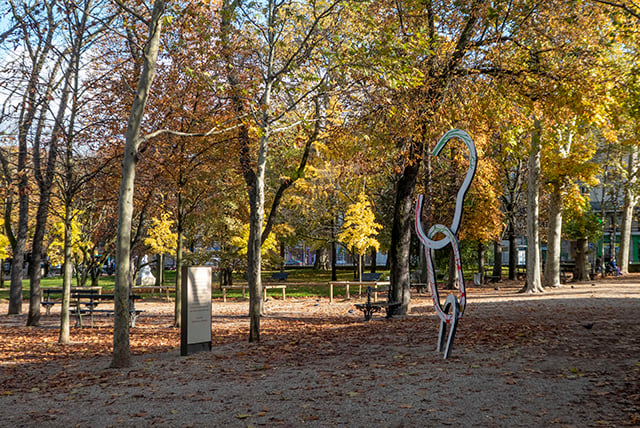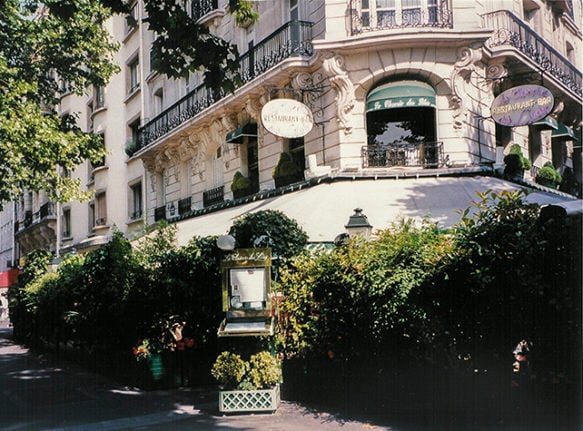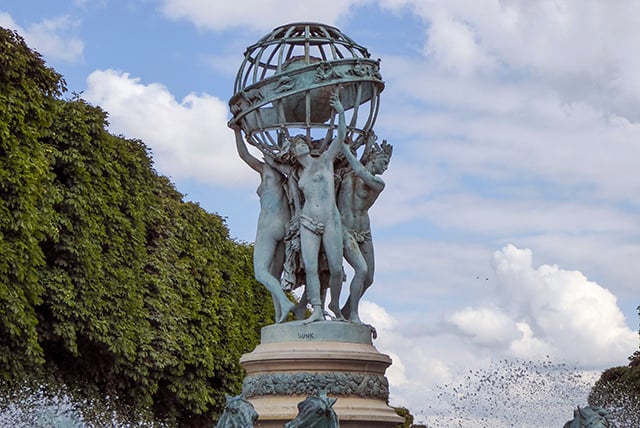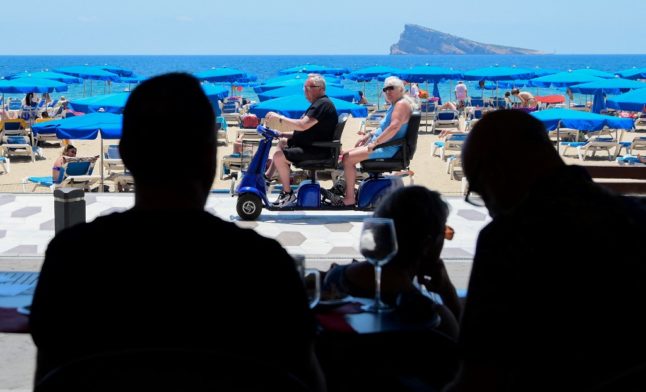Black history in Paris is broad and deep, and visitors to the city who take the time to explore sites that recall this history will leave the French capital with a deeper appreciation of the impact of African diaspora history and culture on the city.
So here are six little-known sites that that extend from the Luxembourg Garden to the Bobino Theatre in Montparnasse. You should be able to walk the whole itinerary in about an hour.
Memorial to the Abolition of Slavery
Le Cri, L’Ecrit is a large bronze sculpture in the shape of a chain that emerges from the ground on the eastern side of the Luxembourg Garden.
Installed on May 10th, 2007 in the presence of outgoing president Jacques Chirac and incoming president Nicolas Sarkozy, it marks the 10th of May as the National Day for the Commemoration of the Abolition of Slavery. A stele honouring the memory of France’s formerly enslaved people stands nearby.

Memorial to Gaston Monnerville
A memorial to Gaston Monnerville, a native of French Guiana, stands just outside the Observatory Gate on the south side of the garden.
Born in 1858 in Cayenne, Monnerville obtained a law degree at the University of Toulouse. He rose to prominence first as an attorney and then as a politician. During his 21+ year tenure as President of the French Senate, he was the second-highest elected official of the French Republic.
The Carpeaux Fountain
Designed by Jean-Baptiste Carpeaux, the Fontaine de l’Observatoire stands at the southern end of the Jardin des Grands-Explorateurs.
It presents four women supporting a celestial sphere, with each woman symbolising a continent of the world: Africa, Europe, Asia, and North America. The right ankle of the African woman is shackled, and, intriguingly, the North American woman is portrayed stepping on the end of the chain.
READ ALSO ‘Forgotten treasure’ – the Paris neighbourhood that tourists rarely see

Closerie des Lilas
Standing near the Carpeaux Fountain, the Closerie des Lilas is famous for having been frequented by writers such as Hemingway and Fitzgerald and artists such as Picasso and Cézanne.
African-American writer James Baldwin used the restaurant as a setting for his novel Giovanni’s Room, where his protagonist, David, goes to have a drink when he learns that his fiancée is about to return to Paris.
Jean Zay Elementary School
In 2018-2019, students from Jean Zay Elementary School engaged in a series of monthly video conferences with students from Nature’s Way Montessori School in Knoxville, Tennessee around the life and art of African-American expatriate Beauford Delaney.
Delaney, who was born in Knoxville in 1901, moved to Paris in 1953 and lived in the vicinity of the Jean Zay School during the 1960s and 1970s. The French government and the Centre Pompidou own several of his works.
Bobino Theatre
It was here that African-American music-hall star Josephine Baker gave her last performance in 1975.
Baker was enjoying a successful comeback when she suffered a stroke in her bed after a show. She was taken to the nearby hospital Pitié-Salpétière, where she died the following day.
Her funeral procession passed in front of the Bobino before making its way to the Madeleine church, where the funeral was held.
READ ALSO Five of the best off-the-beaten track museums in Paris
These are just some of the sites on travel company Entrée to Black Paris’s walking tour – a tour that has now developed into a live virtual tour that can be enjoyed online while Covid-related health and travel restrictions are in place.
You can find out more HERE or by emailing [email protected]



 Please whitelist us to continue reading.
Please whitelist us to continue reading.
Member comments